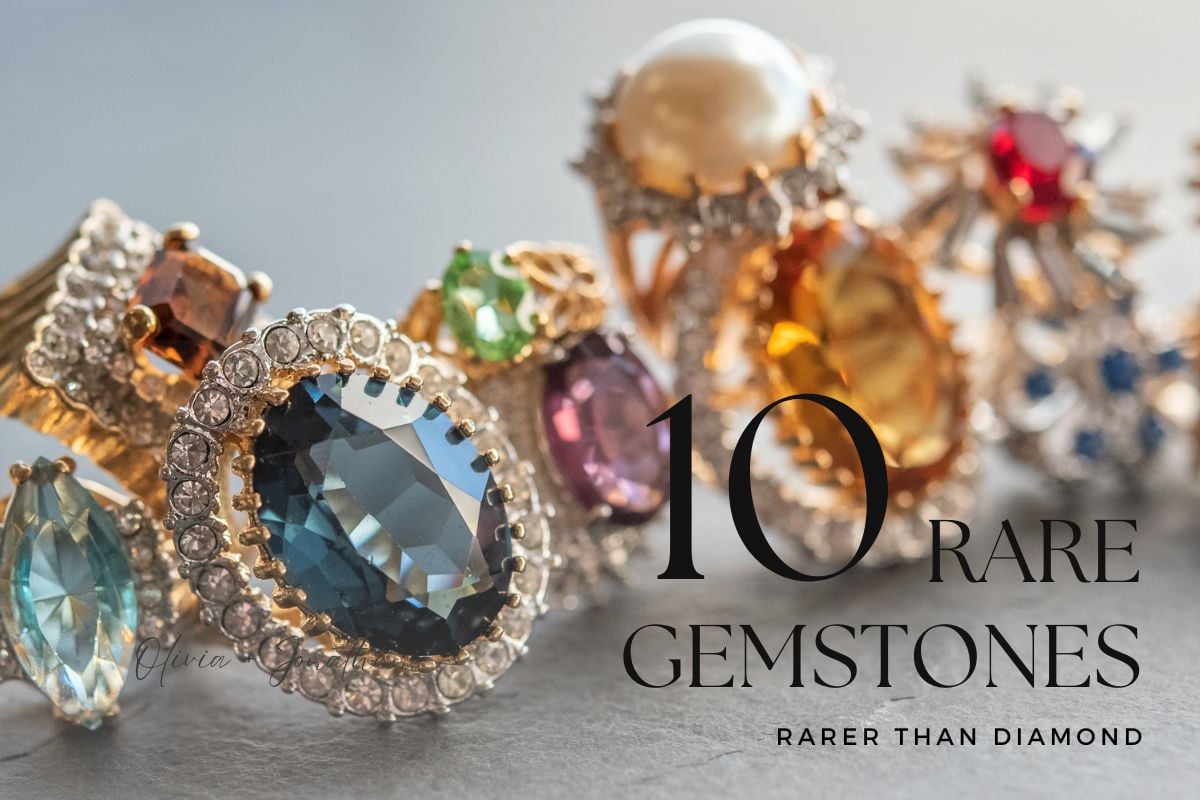Diamonds have long been celebrated as the epitome of rarity and luxury. However, contrary to popular belief, they are not the rarest stones on Earth. In this article, we delve into the fascinating world of rare gemstones that surpass diamonds in their scarcity. If you’ve ever wondered about gemstones rarer than diamond, you’re in for a treat.
Table of Contents
Why Diamonds Are Not the Rarest Gemstones
The diamond industry has done an exceptional job of marketing diamonds as the ultimate symbol of rarity and luxury. This perception is further fueled by the controlled release of diamonds into the market, creating an artificial sense of scarcity. However, when you look at the geological abundance of diamonds, they are far more common than many other rare stones. Diamonds are primarily composed of carbon, one of the most abundant elements on Earth. They are found in multiple locations across the globe, from Africa to Russia and even Canada. The supply is ample; it’s the demand that has been meticulously managed to maintain high prices.
The notion that diamonds are the rarest gemstones is also debunked when we consider the variety of colors and types available. While certain colors of diamonds, like blue and red, are indeed rare, the traditional colorless or slightly yellow diamonds are relatively common. In contrast, some of the gemstones on our rare gemstones list, like Red Diamond or Blue Garnet, exist in such limited quantities and specific locations that they are genuinely hard to come by. These gemstones not only offer unique aesthetic qualities but are also so scarce that they become the subject of intense competition among collectors and enthusiasts.
By understanding the true landscape of gemstone rarity, it becomes clear that diamonds are not the pinnacle of scarcity they are often portrayed to be. This section aims to shed light on the genuine gemstones rarer than diamond, offering a more nuanced perspective on what rarity in the gemstone world truly means.
Read more: How is Diamond Formed in Nature?
Criteria for Rarity in Gemstones
The concept of rarity in gemstones is a multifaceted one, influenced by a variety of factors that go beyond simple supply and demand. One of the primary criteria is geological availability. Some rare gemstones are found only in specific, often remote, locations, making their extraction challenging and costly. For instance, the Painite, once listed as the world’s rarest mineral, is primarily found in Myanmar. Its scarcity is not just a function of its limited geographical distribution but also the difficulty in mining it. Geological availability also encompasses the conditions under which the gemstone forms. Some gemstones require extremely specific conditions—like high pressure and temperature—that make their formation a rare event in itself.
Another crucial factor is the gemstone’s unique characteristics, such as color, clarity, and overall quality. For example, while sapphires are relatively common, a perfect cornflower blue sapphire with high clarity and no inclusions is exceedingly rare. Similarly, the Blue Garnet’s ability to change color depending on the lighting conditions makes it one of the most sought-after rare stones. Demand also plays a role in a gemstone’s rarity. Some gemstones may be abundant but are in such high demand that they become rare in the marketplace. Conversely, some may be scarce but have limited demand, affecting their perceived rarity.
Understanding these criteria provides a more nuanced view of what makes a gemstone rare. It’s not just about the scarcity of the material but also its unique features and the demand it commands. This multi-dimensional approach to evaluating rarity offers a more comprehensive perspective, allowing collectors and enthusiasts to better appreciate the true value of rare gemstones.
10 Rare Gemstones Rarer Than Diamond: The Ultimate Rare Gemstones List
If you’re a collector or simply curious, here is a rare gemstones list that will leave you amazed. Each of these gemstones is rarer than a diamond and possesses unique characteristics that make them highly sought after.
- Red Diamond
Red diamonds are among the rarest diamonds in the world. They are primarily found in Australia and exhibit a captivating red hue that is unmatched in the gemstone world.
- Blue Garnet
Blue garnets are known for their color-changing ability. They appear blue in daylight and turn purplish in incandescent light. These stones are mainly found in Madagascar and the United States.
- Alexandrite
Alexandrite is another color-changing gemstone, shifting from green in daylight to red under incandescent light. It was first discovered in Russia and is named after Tsar Alexander II.
- Painite
Once considered the world’s rarest mineral, Painite can cost up to $60,000 per carat. It was first discovered in Myanmar in the 1950s.
- Grandidierite
This blue-green mineral was first discovered in Madagascar and is named after French explorer Alfred Grandidier. Its unique color and scarcity make it highly valuable.
- Musgravite
Musgravite is an extremely rare gemstone, similar in composition to Taaffeite. It was initially discovered in Australia and has been found in only eight locations worldwide.
- Black Opal
Black opals are the rarest form of all opal varieties and are characterized by their dark body tone and vibrant play of color. They are primarily found in Australia.
- Benitoite
This blue to purple gemstone is found mainly in San Benito County, California, hence the name. It is the official state gem of California and is especially rare.
- Poudretteite
First discovered in Mont St. Hilaire in Quebec, Canada, this gemstone is extremely rare and is often mistaken for Pink Sapphire due to its similar hue.
- Jeremejevite
This colorless, sky-blue or yellowish gemstone is primarily found in Namibia. It was named after Russian mineralogist Pavel Jeremejev.
How to Identify Rare Gemstones
The identification of rare stones is a nuanced process that combines traditional gemological methods with advanced scientific techniques. Traditional methods like visual inspections for color, clarity, and inclusions, as well as tests for hardness and specific gravity, serve as the initial steps. However, these are often insufficient for definitively identifying rare gemstones. Advanced techniques such as spectroscopy provide a more in-depth analysis. Spectroscopy can identify the elements present in the gemstone, offering a unique “fingerprint” that confirms its identity. Tools like Raman spectroscopy and X-ray fluorescence (XRF) are also employed for a more comprehensive identification.
Provenance and documentation add another layer of verification in identifying rare gemstones. Certificates from reputable gemological laboratories offer detailed information about the gemstone, including its origin and unique characteristics. For extremely rare gemstones, provenance becomes crucial. Knowing the history of the gemstone, including its mining location and chain of custody, can provide invaluable confirmation of its rarity and authenticity. This multi-faceted approach ensures that collectors and enthusiasts are considering multiple factors that contribute to a gemstone’s rarity and value.
Conclusion
The world of gemstones is far more diverse and intriguing than most people realize. While diamonds may capture the spotlight, there are numerous gemstones rarer than diamond that deserve attention. Whether you’re a collector, a jeweler, or simply a gem enthusiast, exploring these rare gemstones can be a rewarding experience.
Related article: 7 Best Diamond Alternatives for Daily Jewelry

Follow Us on Pinterest



